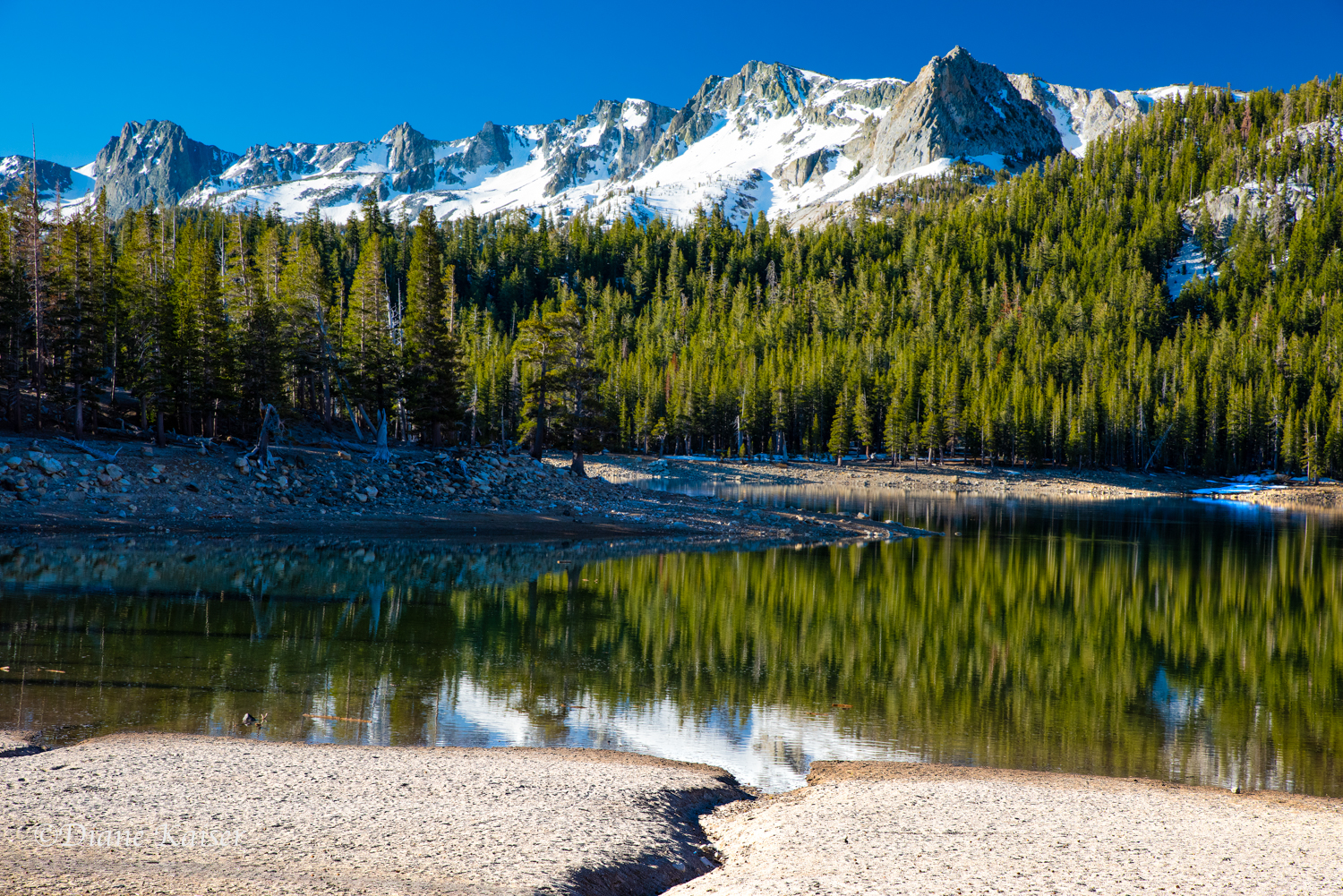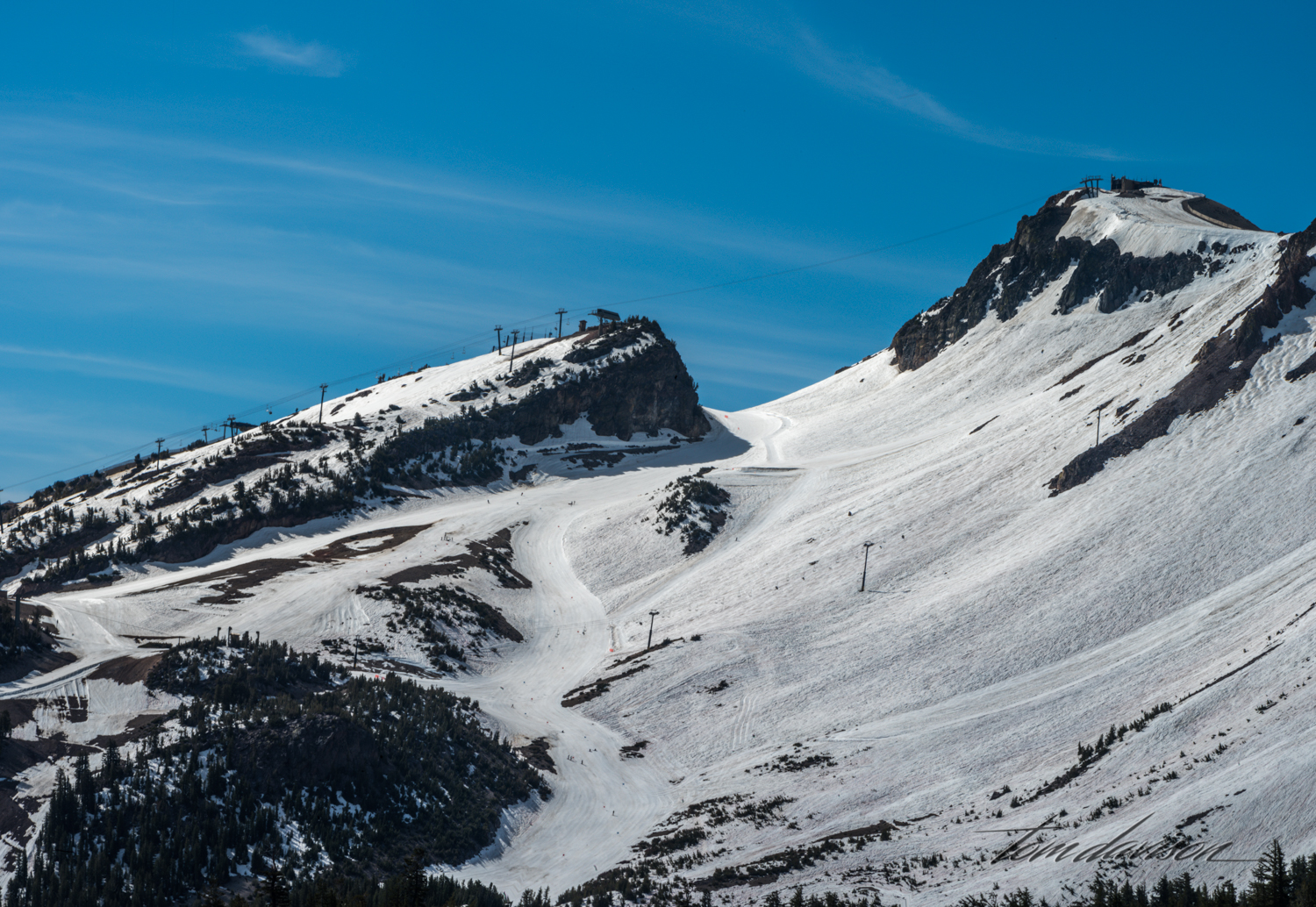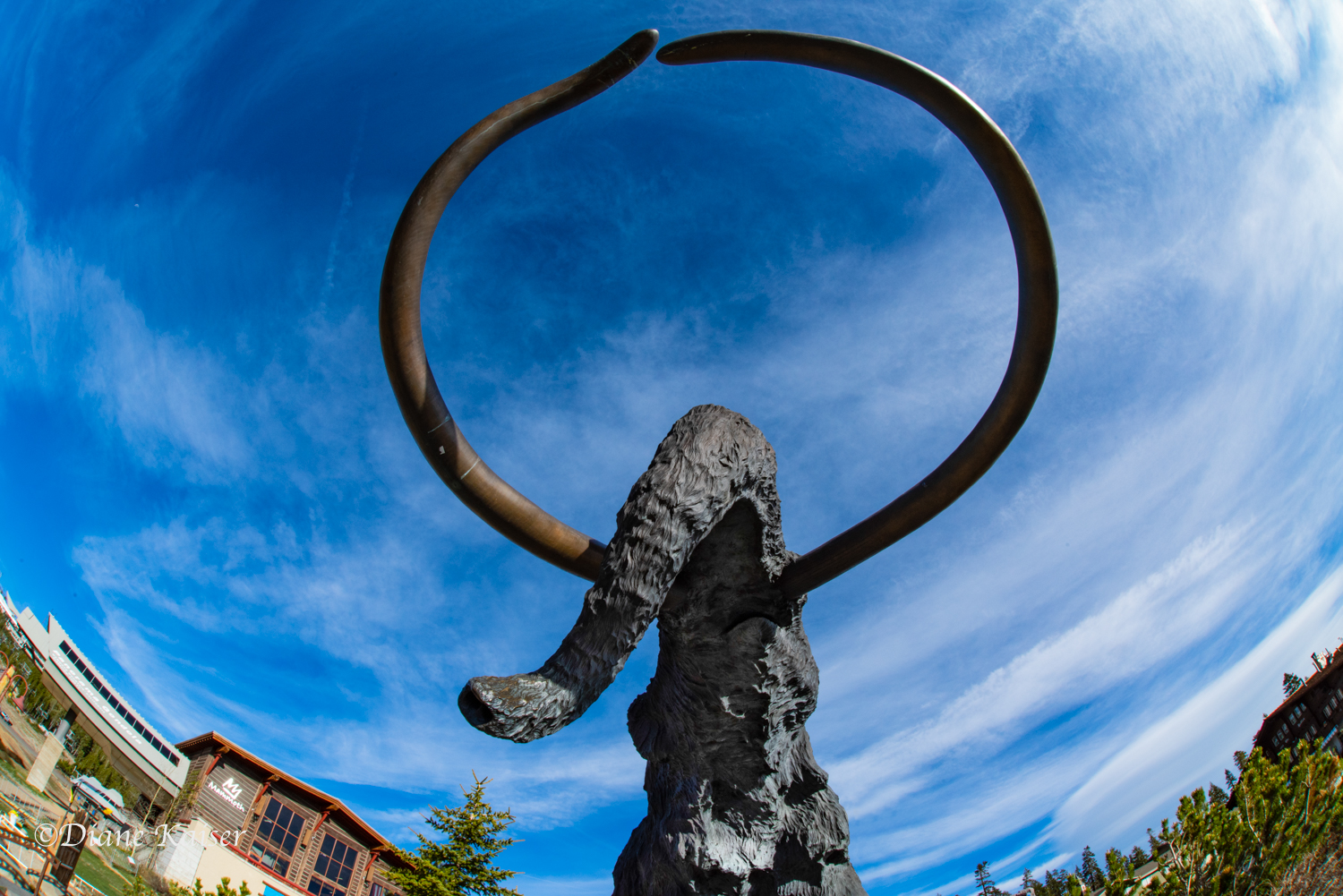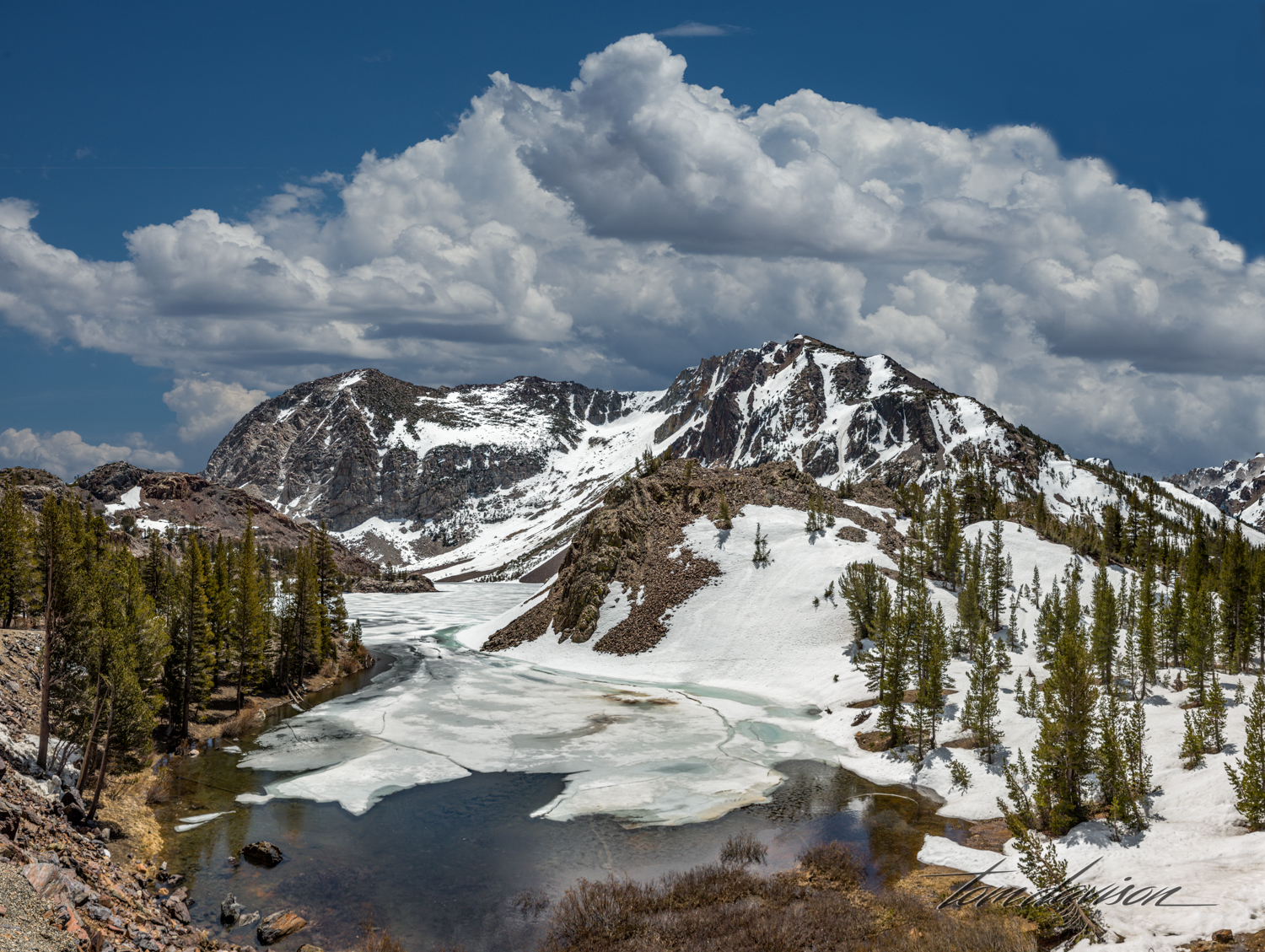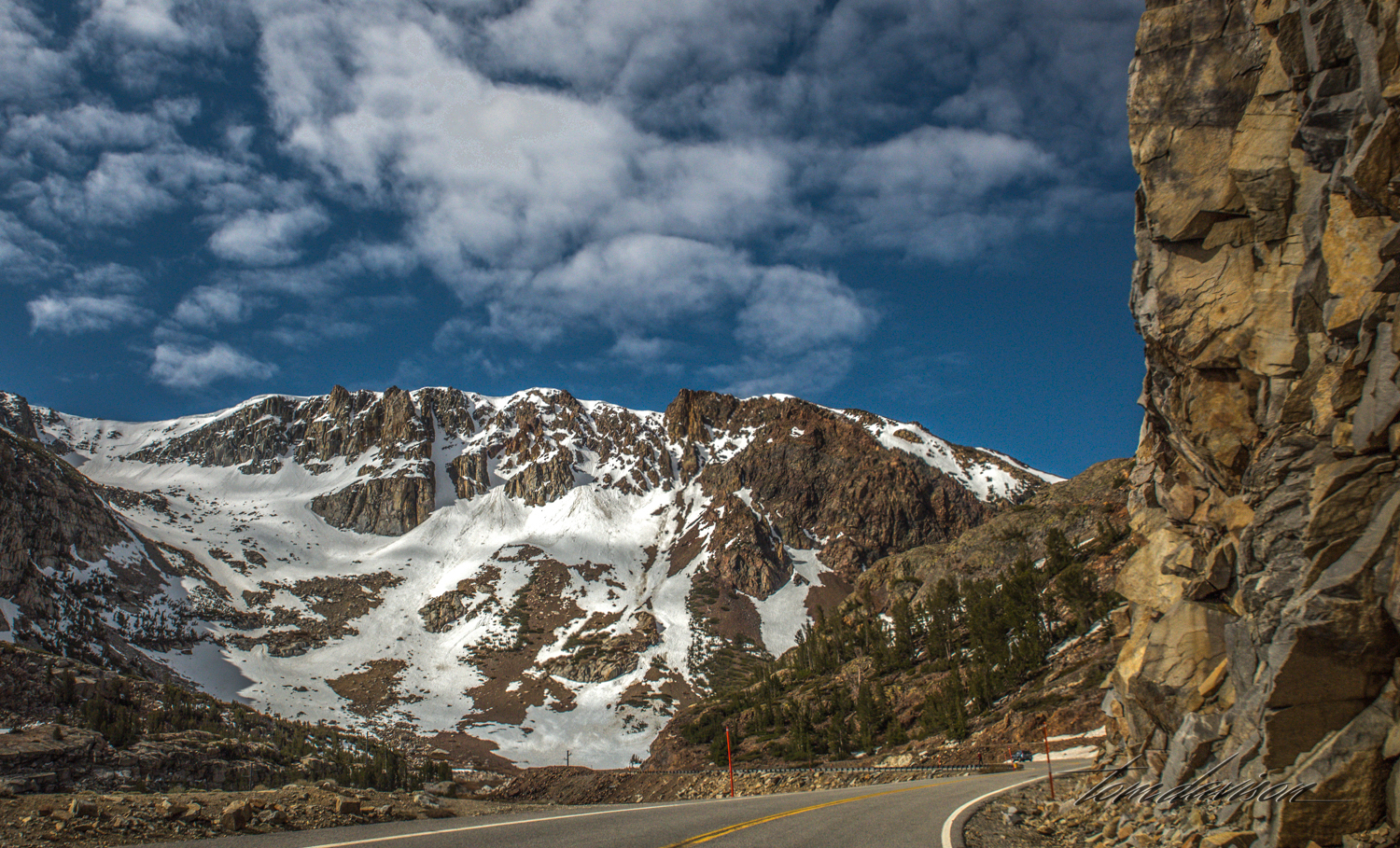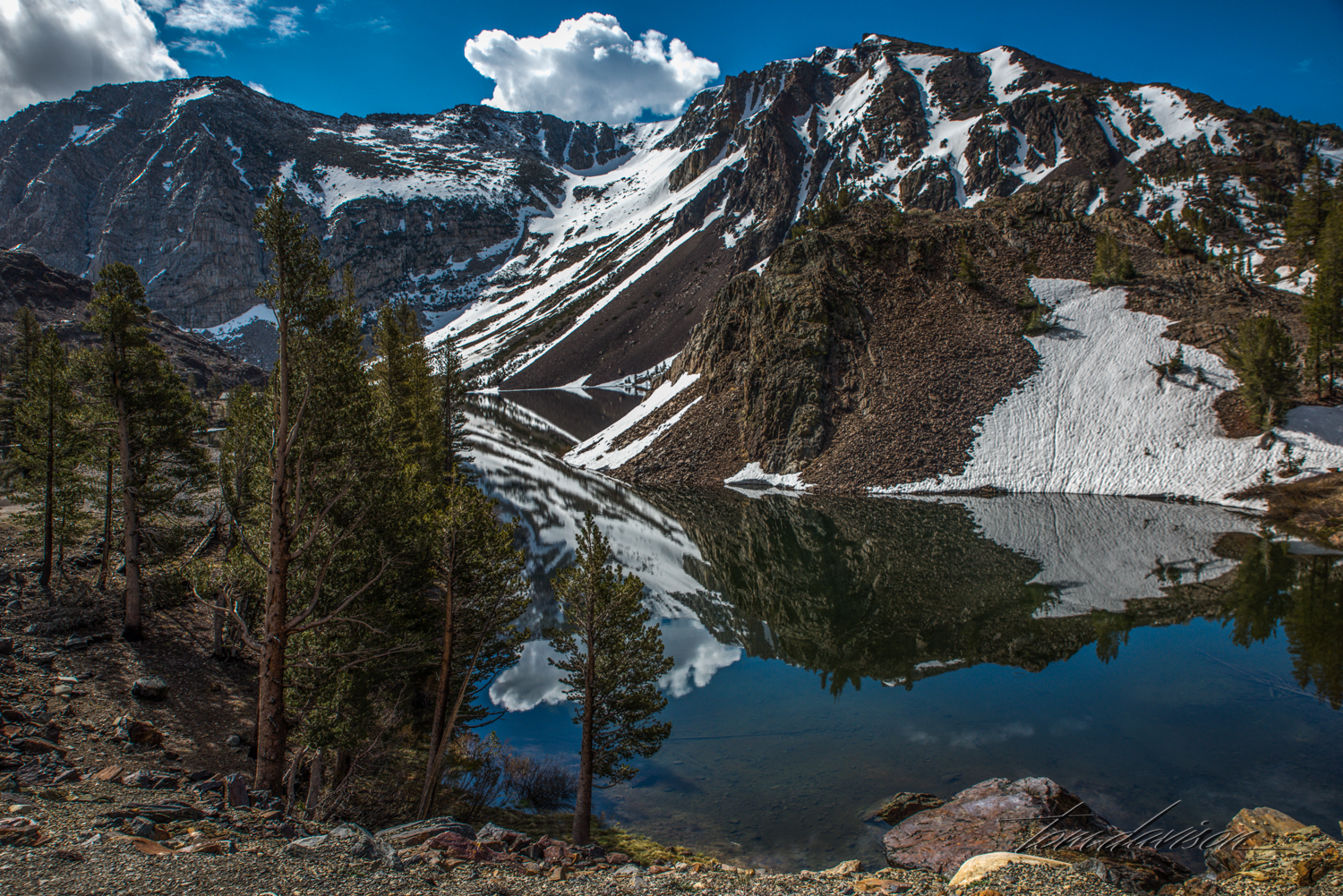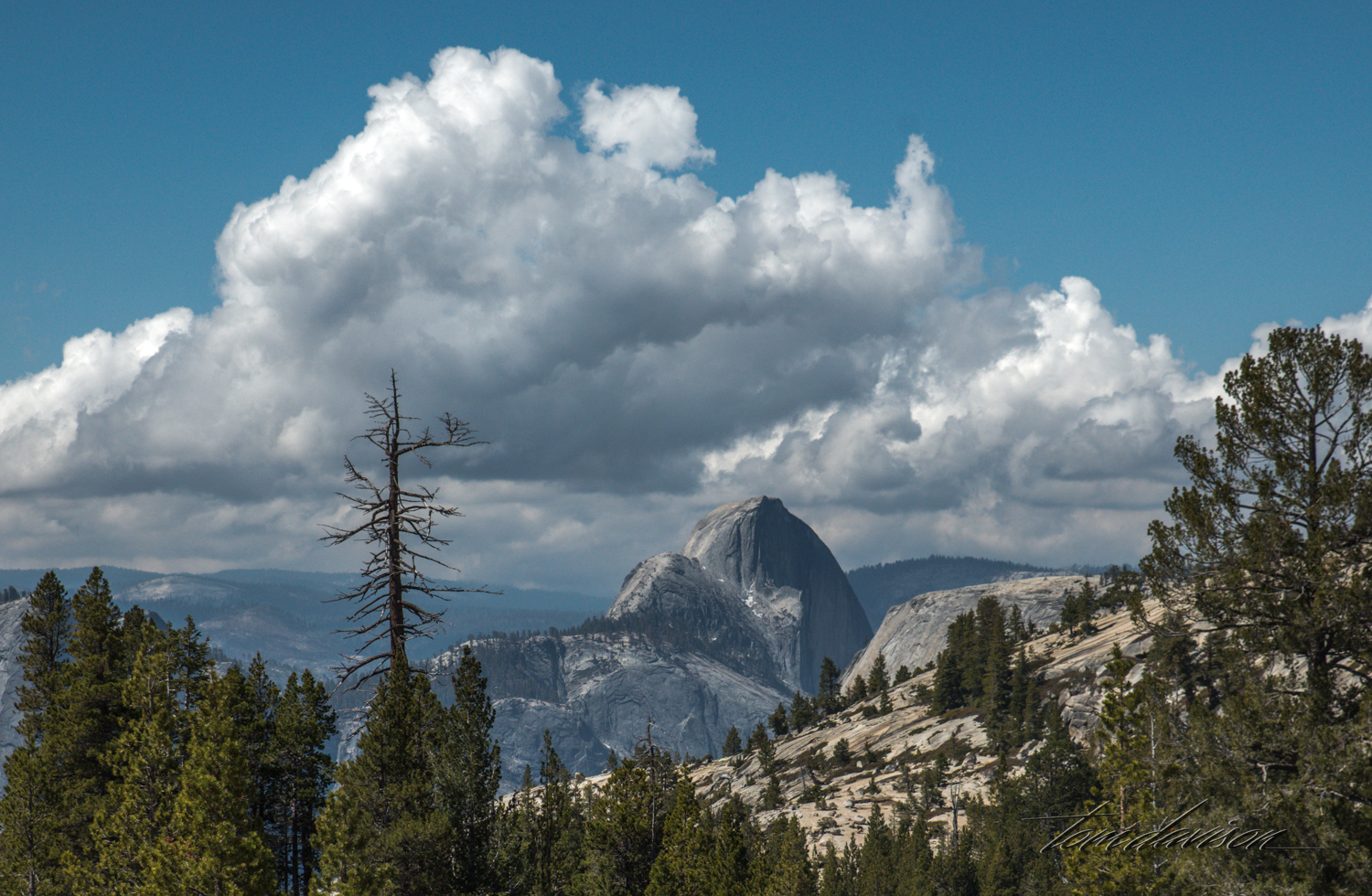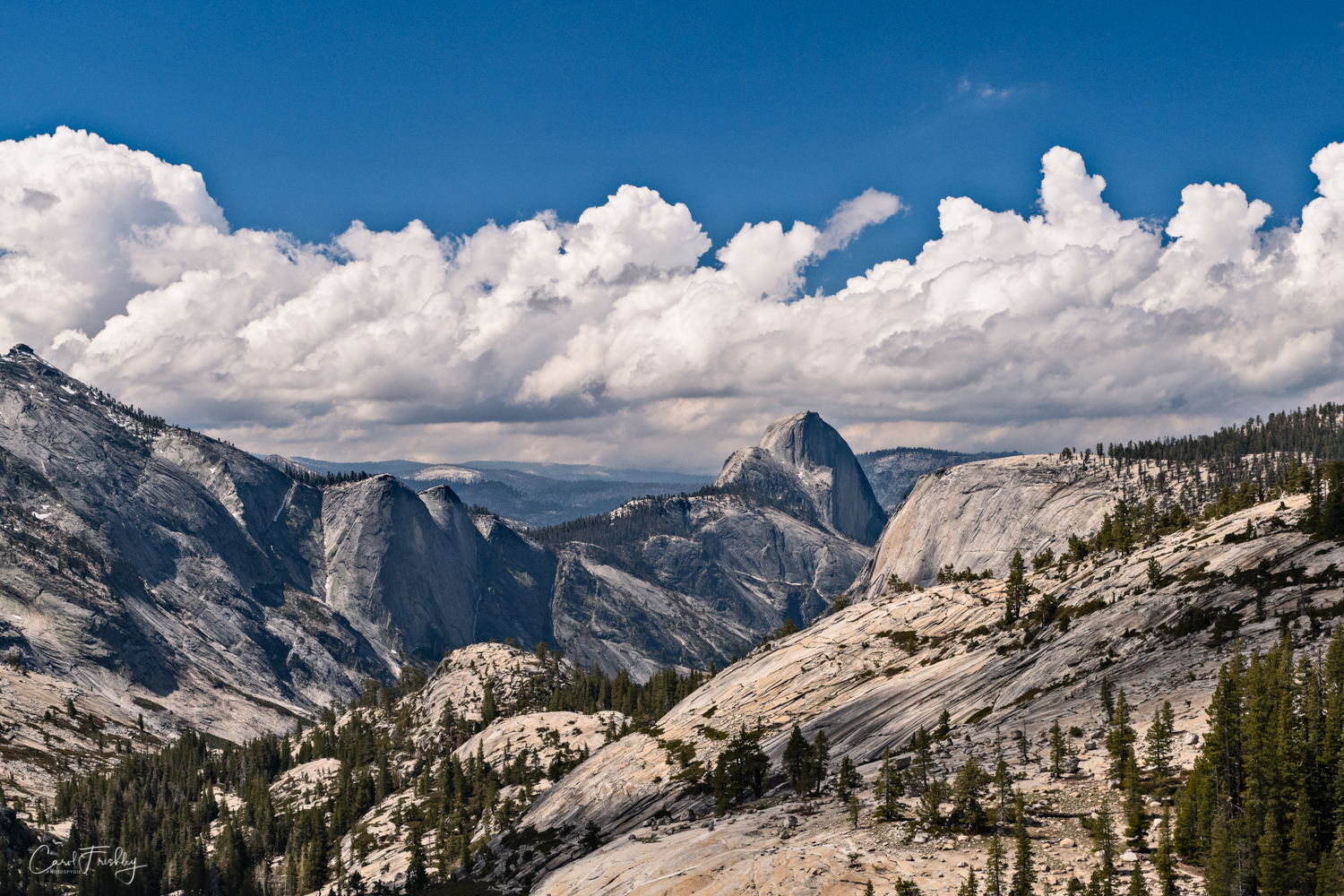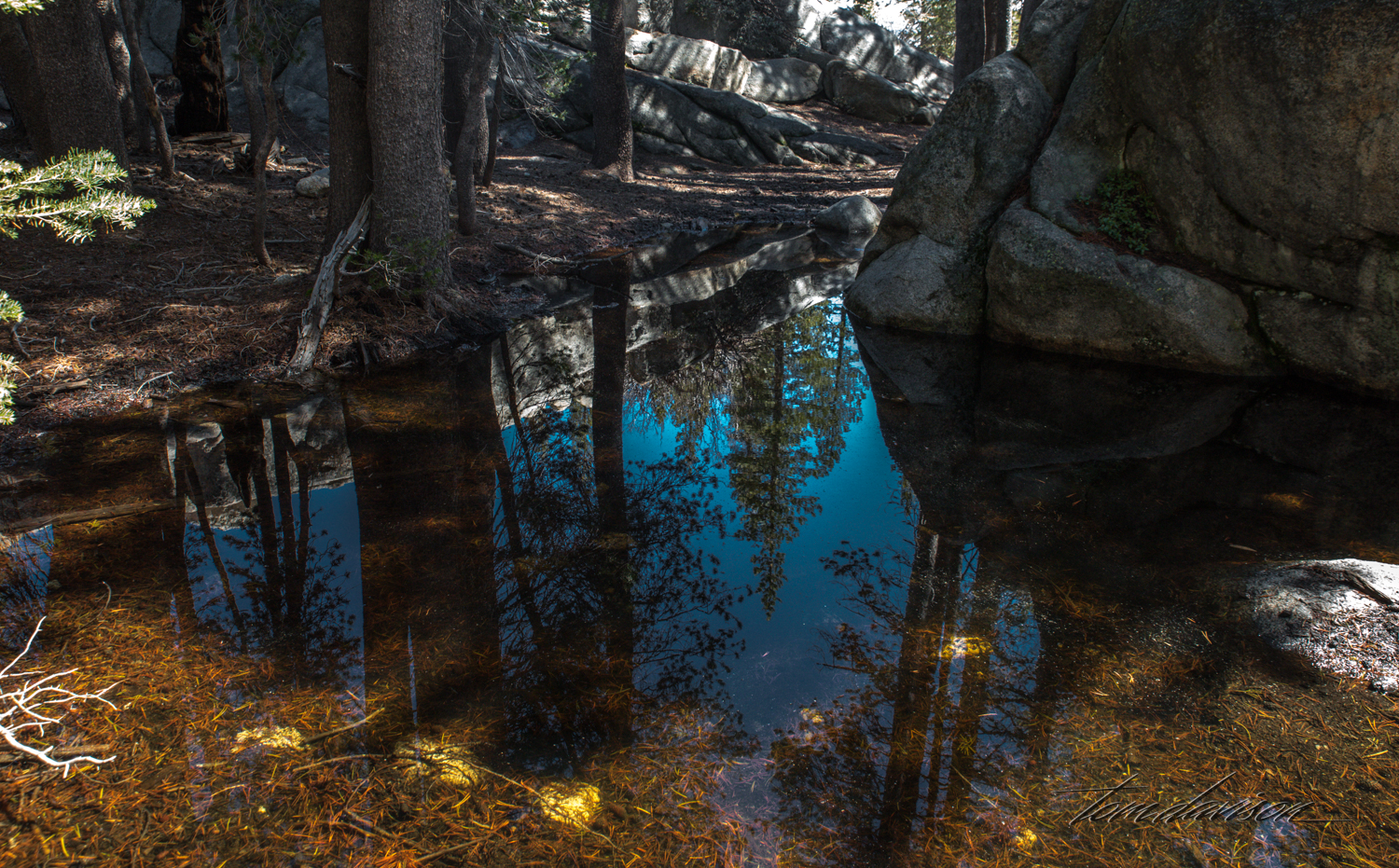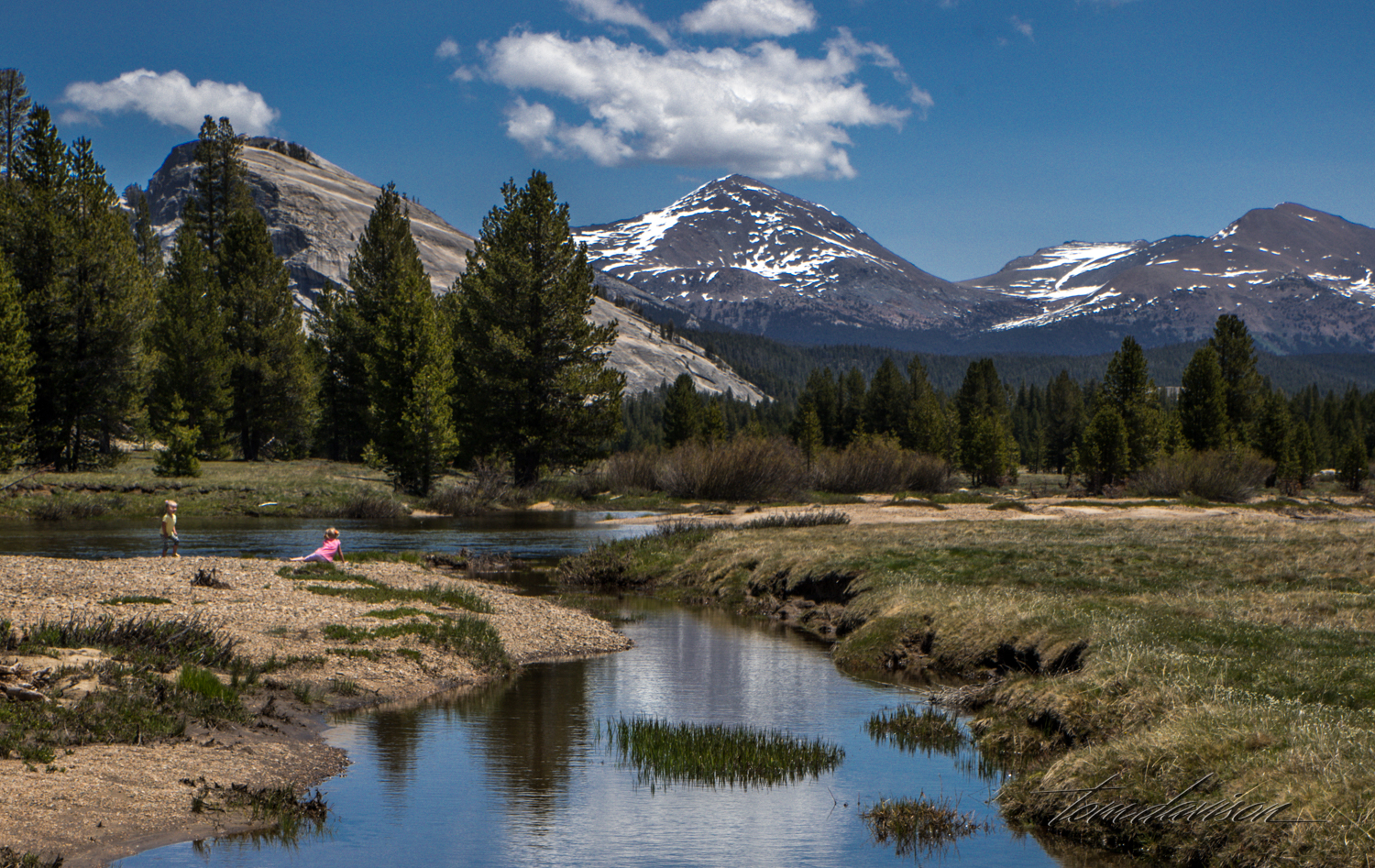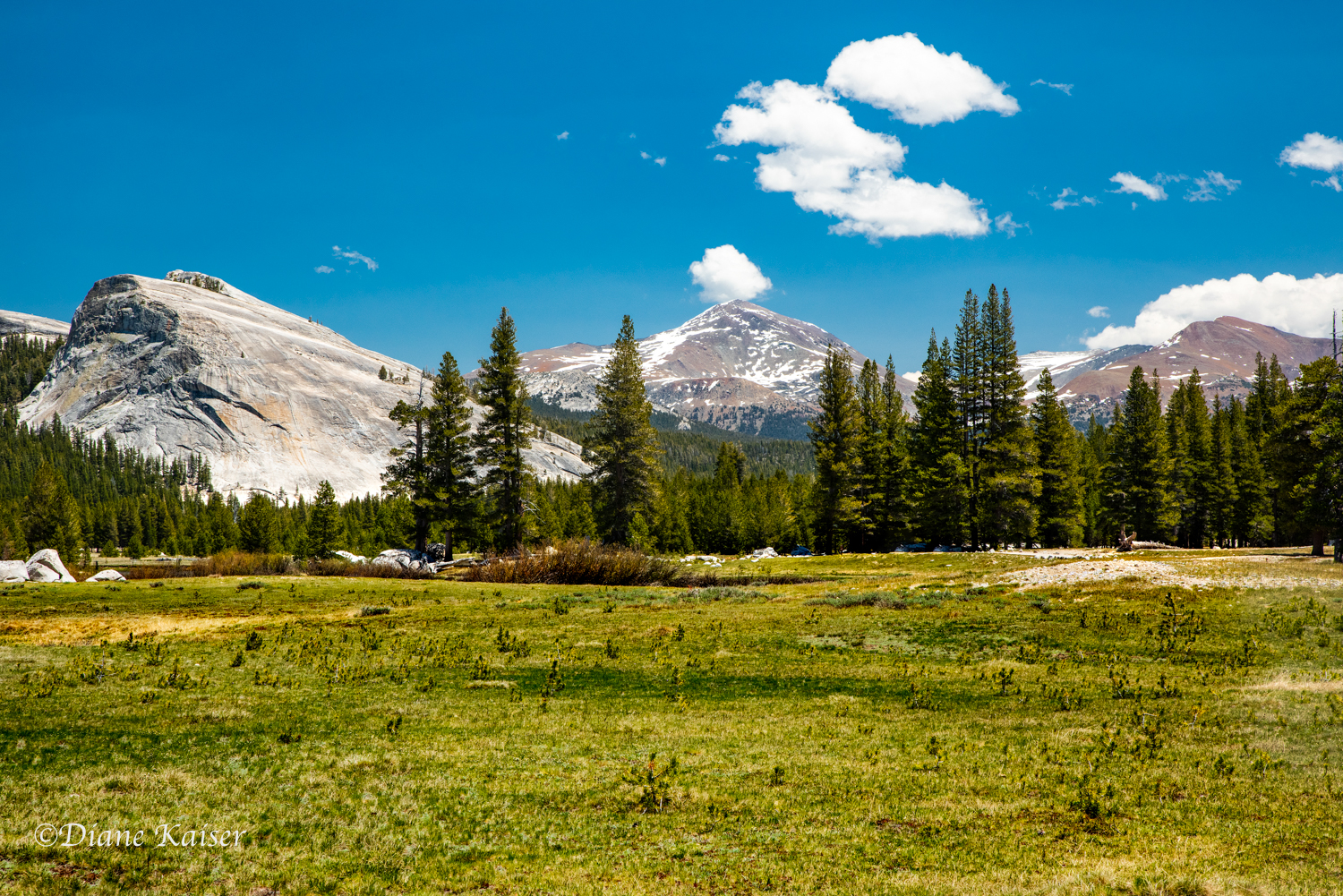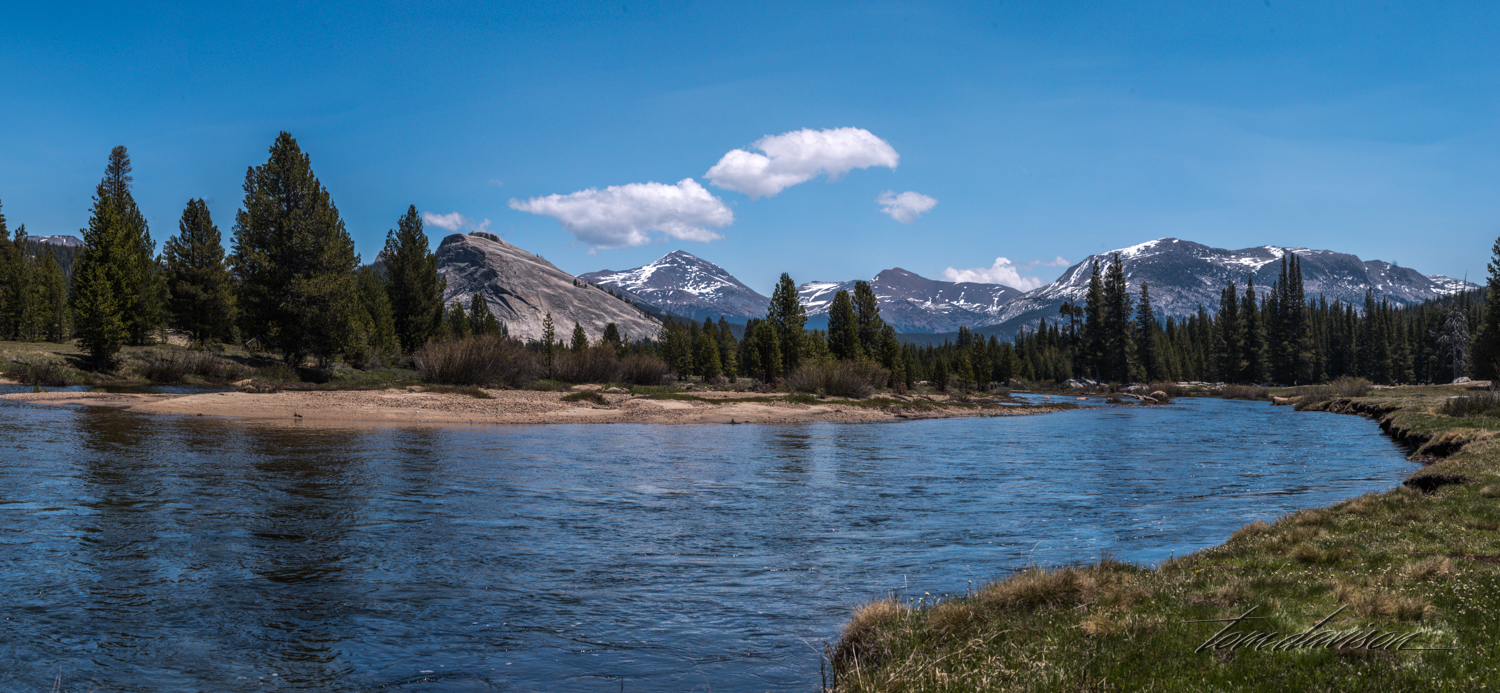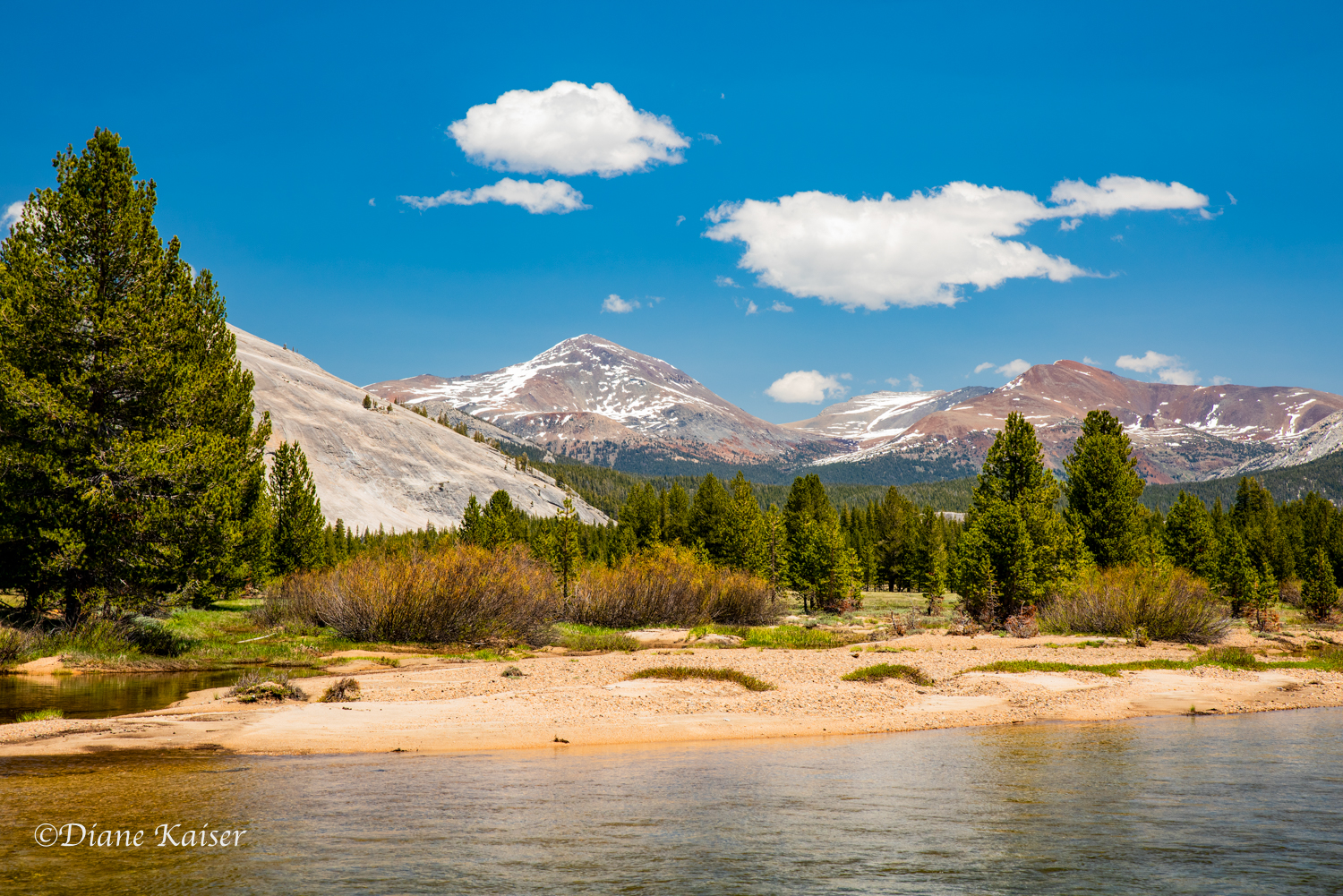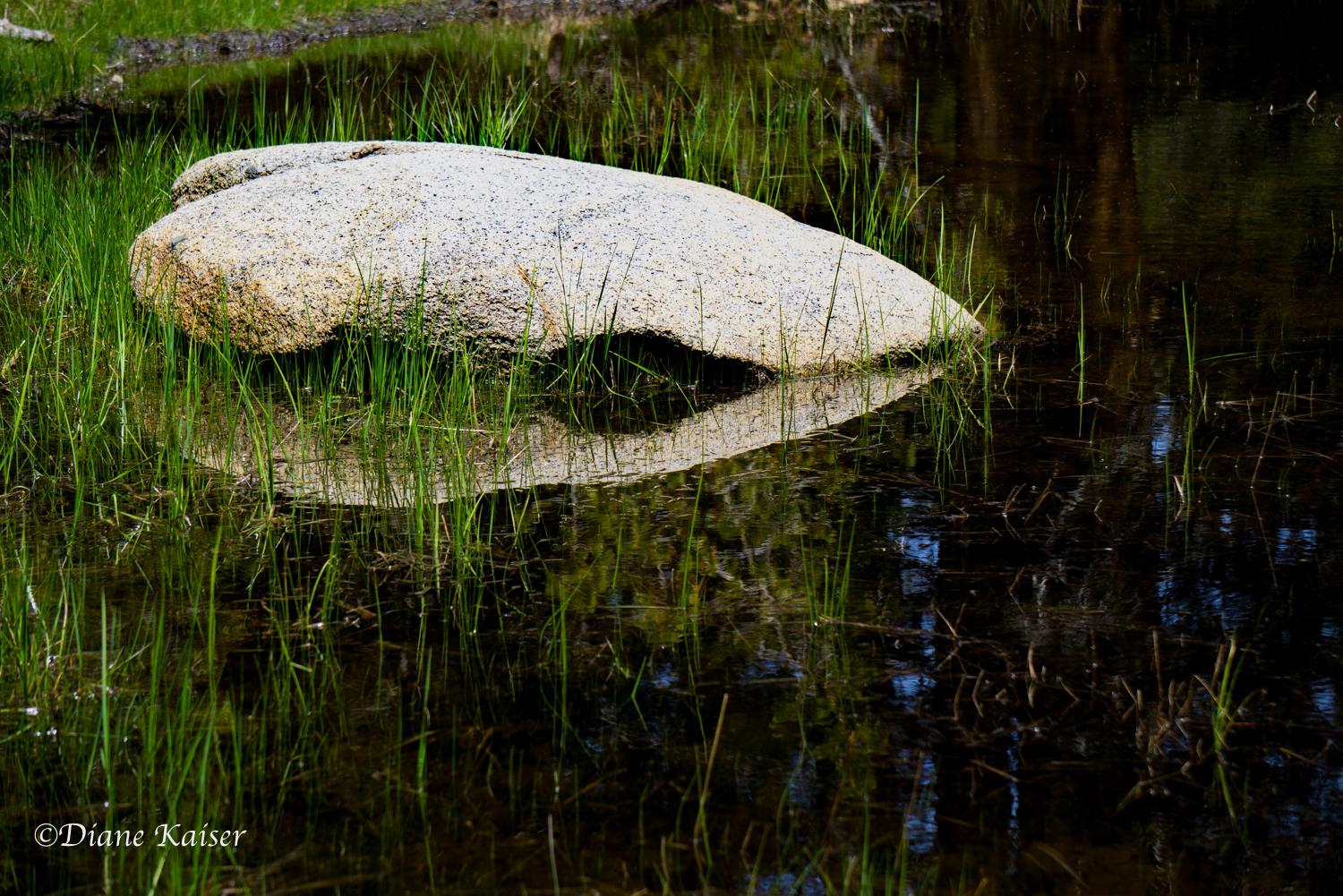Devil’s Postpile sits along the Middle Fork of the San Joaquin River on the western slope of the Sierra Nevada. It is a small national monument, as they go, with just 800 acres set aside to preserve a columnar basalt formation that was begun about 82,000 years ago. It all started with a volcanic event. This particular lava flow was ideally suited for columnar formation as it was thick, had a consistent mineral composition and cooled slowly and evenly. As the lava cooled, it contracted and split into symmetrical, vertical, hexagonal columns.
Somewhere between 12,000 and 20,000 years ago, a glacier flowed down what is now called the Middle Fork of the San Joaquin River. It rode over the fractured lava formation and carved away one side of the postpone, revealing columns 60 feet high.
Over time, erosion and earthquakes broke off some of the columns that now lie fragmented below the postpile.
Here the columns become horizontal! This is seen on the backside of the pile and on the way to the top.
There are no guardrails up here! Kids running around made me nervous as it was a looooong way down to a pile of rocks.
Part of the 0.8 mile loop hike around the postpile.
The meadow where the San Joaquin River runs. Not much water there now but I suspect it is much more interesting in the spring.
The road into this National Monument is very narrow and windy, sometimes down to just one lane. During the heavy tourist season, people wanting to visit the Devil’s Postpile must take a shuttle from the ski area of Mammoth Lakes. In the fall, cars are allowed to drive in . . . but it can be a bit scary! This site is close to Rainbow Falls but we were not prepared to hike the relatively short distance to the falls, our feelings made better by the Ranger telling us there was not much water coming down!




















